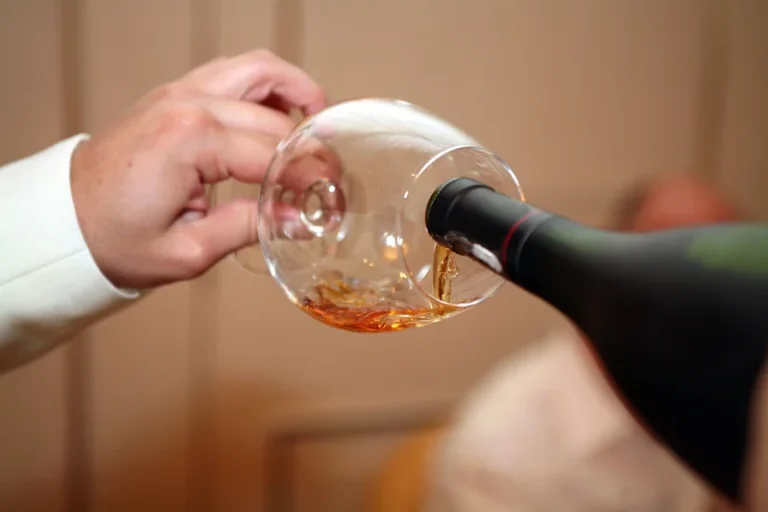This group drinks more frequently than any other, although their total alcohol intake is less than the young antisocial subtype. Two-thirds of this subtype have sought help for their alcoholism at some point, making them by far the most likely to have done so. They often seek help at self-help groups, rehabilitation programs, and detox programs.

What Is Alcoholism?
Signs and symptoms of chronic alcoholism may include sweating, rapid heartbeat, hand tremors, problems sleeping, nausea and vomiting, hallucinations, restlessness and agitation, anxiety, and occasionally seizures. With the right support and resources, it is possible to overcome alcoholism and lead a fulfilling, healthy life. Remember, recovery is possible – take the first step towards a better future today. Encouraging your loved one to seek professional help is the best way to support them in their journey towards recovery. You can also offer emotional support and attend therapy or support groups together.

Traits of Alcohol Use Disorder
- It’s a journey where every story matters, and every step towards recovery is a testament to resilience and the human spirit.
- They tend to go to self-help groups, specialty treatment programs, detox programs, and treatment with individual health care providers.
- Few seek help for their drinking, but when they do, they gravitate toward 12-step groups as opposed to private treatment.
- It also can determine whether a certain type of treatment will be more effective than another.
- Most people of this subtype are employed, although their income level is likely to be lower than the functional subtype.
- Moreover, many don’t believe they have a drinking problem until they start experiencing health issues.
If you or someone you know is showing traits of alcohol use disorder, contact your healthcare provider. Other studies compared alcoholics with and without coexistent psychopathologies. Not surprisingly, alcohol affects just about every aspect of their life. They have the highest rate of emergency room visits for their drinking, and they’re likely to suffer medical problems due to alcohol abuse.
Alcohol Treatment with Dr. Wandler
By Toketemu OhwovorioleToketemu has been multimedia storyteller for the last four years. Her expertise focuses primarily on mental wellness and women’s health topics. The unitary disease concept, as illustrated in “The Drunkard’s Progress,” by Nathaniel Currier. Typology theorists believe this is an inadequate representation of the heterogeneity of etiologies and drinking patterns. © Alcohol Research Documentation, Inc., Rutgers University Center of Alcohol Studies. Nova Recovery Center is dedicated to helping you or your loved one get help.

It’s important to avoid enabling behaviors like providing money for alcohol or making excuses for their behavior. The Substance Abuse and Mental Health Services Administration (SAMHSA) defines heavy alcohol use as binge drinking on 5 or more days in the past month. A person with AUD can lose control over the amount of alcohol they consume and continue to drink despite any adverse health, social or occupational consequences. As we wrap up this exploration, let’s embrace empathy, celebrate the strength within each individual’s recovery, and continue supporting a community that understands the complex and personal nature of alcoholism.
A study by the National Institute on Alcohol Abuse and Alcoholism (NIAAA) and National Institutes of Health (NIH) establishes five different types of alcoholics. Each category represents a unique group, but they are all determined by the same factors. Understanding the language used in the study is important for understanding the differences between each group. Genetic factors play a significant role in alcoholism, and individuals with a family history of alcoholism are more likely to develop alcohol use disorders. One of the defining characteristics of the functional subtype is the ability to maintain their external responsibilities despite their alcohol use. They may be high-functioning individuals who excel in their professional lives, maintain relationships, and fulfill their daily obligations.
- Not all alcoholics know they suffer from a substance abuse problem because denial is a regular and expected aspect of alcoholism.
- They may not drink every day, but when they do, they struggle to control their intake.
- It’s not a one-size-fits-all journey but a human experience marked by diverse struggles and triumphs.
- Additionally, young antisocial alcoholics have a high probability of having other substance use disorders.
- They have the highest rate of seeking treatment at an inpatient program and also seek out help from private physicians, psychiatrists, and social workers at high rates.
- There’s no one way to describe a ‘typical alcoholic’ since alcoholism develops differently from person to person.
Almost 35% of young antisocial alcoholics have sought help for their alcohol dependence problems. They tend to go to self-help groups, alcohol detox programs, specialty treatment programs, and private health care providers. Most intermediate familial alcoholics begin https://ecosoberhouse.com/ drinking around age 17 and develop alcoholism later in life, around age 32. About half of this group comes from families with alcohol problems and are likely to suffer from mental disorders. They also have high rates of cigarette, marijuana, and cocaine addiction.

Previous efforts to identify alcoholism subtypes focused primarily on individuals who were hospitalized or otherwise receiving treatment for their alcoholism. Thus, a substantial proportion of people with alcoholism were not represented in the samples previously used to define subtypes of this disease. On average, they drink about 143 days each year, and they typically consume five or more drinks at a time. Few seek help for their drinking, but when they do, they gravitate toward 12-step groups as opposed to private treatment.

We surveyed 2,136 American adults who either wanted to stop drinking alcohol or had already tried to (successfully or not). Still, people dealing with AUD can achieve and maintain sobriety with appropriate treatment 5 types of alcoholics and support. Binge drinking equates to roughly five drinks for men and four for women within two hours. However, these numbers can vary depending on your alcohol tolerance and other biological responses.
With the right support and resources, it is possible to overcome alcoholism and achieve a fulfilling, healthy life. If you have it, you should know that you are not alone and you are living with a chronic medical condition that needs proper management and treatment. Some research shows that up to 6.2% of the American population lives with this condition. Recognizing that you need help is the first step in your treatment journey.